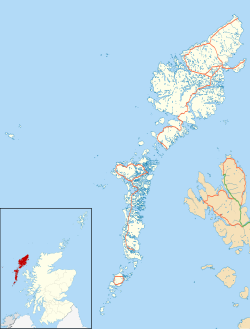Gravir
| |
|---|---|
 Gravir folk museum | |
Location within the Outer Hebrides | |
| Language | Scottish Gaelic English |
| OS grid reference | NB375156 |
| Civil parish | |
| Council area | |
| Lieutenancy area | |
| Country | Scotland |
| Sovereign state | United Kingdom |
| Post town | ISLE OF LEWIS |
| Postcode district | HS2 |
| Dialling code | 01851 |
| Police | Scotland |
| Fire | Scottish |
| Ambulance | Scottish |
| UK Parliament | |
| Scottish Parliament | |
Gravir (Scottish Gaelic : Grabhair [1] ), is a village on the shore of Loch Odhairn (a sea loch) in the Park district of the Isle of Lewis. Gravir is within the parish of Lochs. [2] There is a Free Church, a school and a voluntary fire station in the village. There is also a pier. Most of the plots of land used to be used for crofting, but this has declined in the last 50 years. The road leading to the village is the B8060,[ citation needed ] and continues on to Orinsay and Lemreway.
